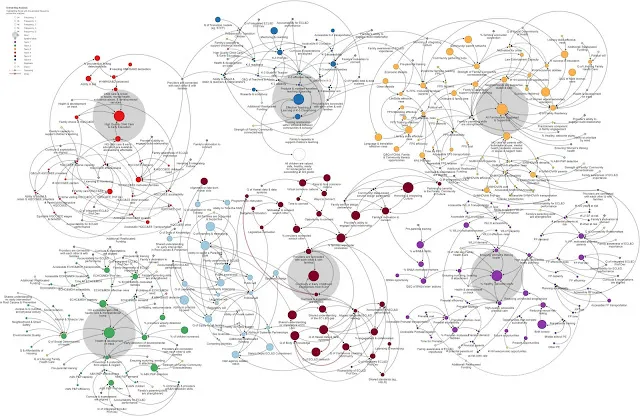Context: The Connecting Clues for Data
Blog: Jim Sinur
The “database of now” demands a quick understanding of data, particularly in context. There are many opportunities in understanding or misunderstanding data in terms of the contexts they participate in, or are connected to, or connected at the edge of a data neighborhood. Because each context has its own unique vocabulary, you can see the opportunity for misconnects in meaning by not understanding the full context of any statement or set of proven facts.
If someone says, "I like the blue one", how can you evaluate what that means? If it is a swimsuit on the beach, it means one thing, if it's a lobster from the same beach, that means a totally different thing. Context is what gives data real meaning. There are three primary forms of context that help understand the true meaning of the base data. One is the real world contextual meaning, the other is the contextual business meaning, and the other is the technical contextual meaning. Obviously, finding meaning in big or monster data is a challenge, but that difficulty increases as the speed increases, particularly if the data is hard to manage or access.
Figure 1 Representation of Interconnected Contexts.
Real-World Context
Data has meaning in terms of its definitional domain. When you mention "blue", usually comes from the color domain. However, in the world of mental health, it means a kind of feeling or mood. So understanding the base context in which a data element exists is essential. If blue is associated with a human context, it could be physical and mean a lack of oxygen. It could also mean that the person is adorned in something blue. This is usually cleared up by understanding the base subject or entity that the data element is associated with by having a precise name, meaning, and basic subject area association. Underlying meaning can be tricky when just looking at the data value alone. Having proper meta-data and associations is the ideal solution to this problem.
Business Context
The contextual areas that relate to business fall into three basic categories of meaning. Every data item or group of data items needs to be viewed in terms of the context they are being viewed in or from. Internal contexts where the vocabulary is understood in the context of the internal organization and defined within a particular organization. These internal contexts usually revolve around the organization and skill definitions. There is also the external context that represents the outside world irrespective of the organization itself. The third context is where the outside world touches the internal world. Listed below are the typical contexts in each of these categories:
Common External Contexts:
Communities, Brand/Reputation, Public, Legal Frameworks/Courts, Geographical Regions, Countries, Local Culture, Governmental Agencies, Industries, Dynamic Industry 4.0, Value Chains, Supply Chains, Service Vendors, Markets, Competitors, Prospects, and Competitors Customers.
Common Internal Contexts
Organizational Culture, Goals, Constraints, Boundaries, Actual Customers, Products, Services, Suppliers, Employees, Contractors, Departments, Divisions, General Accounts, Contracts, Physical Infrastructure, Technical Infrastructure, Properties, Investments, Intellectual capital, Business Competencies. Knowledge, Skills, Patents, Success Measures and Statements
Common Interactive Contexts:
Marketing Channels, Advertisements, Customer Journeys, Customer Experience, Loyalty, Satisfaction Scores, Processes, Applications, User interfaces, Websites, Webpages, and System Interfaces.
Technical Context
Data must also be understood in terms of physical contexts, limitations, and potential lag times. Data sources need to be understood in terms of their currency and ability to be integrated easily with other sources. While many views, interactions, and integrations work well at the logical level, physically, they may not be ready in terms of near-real-time capabilities, transformation potential, or performance levels on or off-prem. While meta-data may exist to understand possible joins and combinations, executing them fast enough to be useful in multiple business contexts may not be possible. The physical data types and file storage mechanisms may not be conducive to the demands of new usage scenarios. New low lag databases that are near real-time will become the standard, going forward.
Net; Net:
Data, information, knowledge are quite dependent on the context(s) they participate in or the perspective they are viewed from. Often Knowledge worlds interact; therefore, meanings can overlap and connect in ways that are essential for ultimate understanding, manipulation, or utilization. Knowing the context of your data is absolutely critical for leveraging understanding. All of this is happening at greater speeds approaching the “database of now” speed necessary to make critical decisions, actions, adjustments or improvements.

